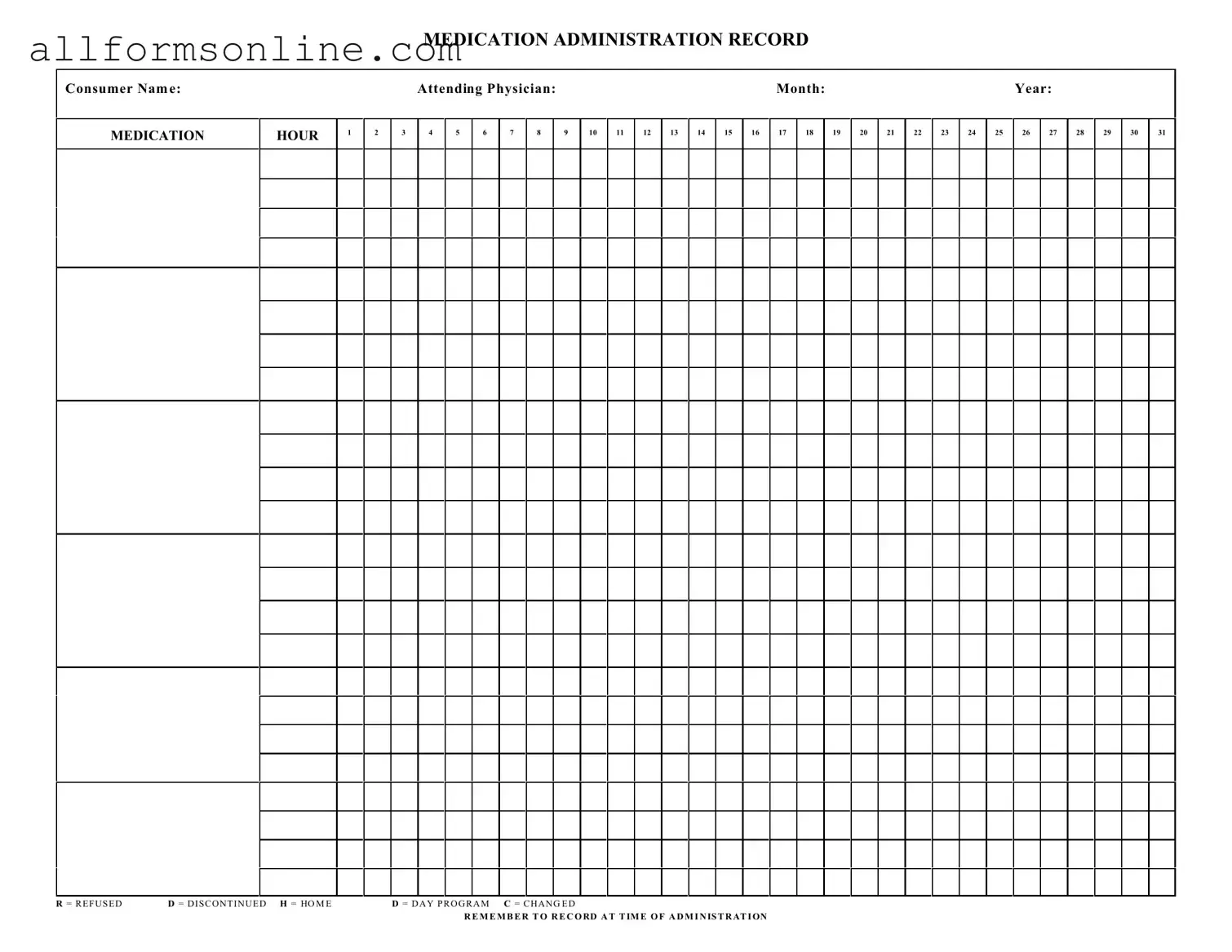What is the purpose of the Medication Administration Record Sheet?
The Medication Administration Record Sheet (MARS) is a crucial tool used to track the administration of medications to consumers. It ensures that each dose is documented accurately, helping caregivers and healthcare professionals monitor medication schedules and adherence. This record is essential for maintaining the health and safety of individuals receiving medications.
How should I fill out the Medication Administration Record Sheet?
When filling out the MARS, start by entering the consumer's name, the attending physician's name, and the month and year. Each medication should be listed along with the corresponding time it is to be administered. As you administer the medication, mark the appropriate box for each hour. If a dose is refused, discontinued, or changed, use the designated letters (R, D, C) to indicate these actions clearly. Remember to document at the time of administration to ensure accuracy.
What do the abbreviations on the form mean?
The MARS includes several abbreviations to indicate specific actions or statuses. "R" stands for "Refused," meaning the consumer did not take the medication. "D" indicates "Discontinued," which shows that the medication is no longer being administered. "H" refers to "Home," indicating the consumer is at home rather than in a facility. "D" for "Day Program" signifies that the consumer is participating in a day program, and "C" means "Changed," which notes any alterations in the medication regimen. Understanding these abbreviations is vital for accurate record-keeping.
Why is it important to record medication administration at the time it occurs?
Recording medication administration at the time it occurs is crucial for several reasons. It helps prevent errors by ensuring that the information is fresh in the caregiver's mind. Timely documentation also provides an accurate account of what medications have been given, which is essential for tracking the consumer's health and response to treatment. This practice can significantly reduce the risk of missed doses or incorrect administration, ultimately enhancing patient safety.
What should I do if I make a mistake on the Medication Administration Record Sheet?
If you make a mistake on the MARS, do not attempt to erase it. Instead, draw a single line through the error and initial it. Then, write the correct information next to it. This method maintains a clear record of what occurred, ensuring transparency and accountability in medication administration. Keeping accurate records is vital for the consumer's health and the integrity of the healthcare process.
Who is responsible for maintaining the Medication Administration Record Sheet?
Typically, the responsibility for maintaining the MARS falls on the healthcare professionals and caregivers directly involved in administering medications. This includes nurses, nursing assistants, and other staff members trained in medication administration. However, it is a shared responsibility, and everyone involved in the consumer's care should ensure that the records are accurate and up-to-date. Regular audits may also be conducted to ensure compliance with documentation standards.
